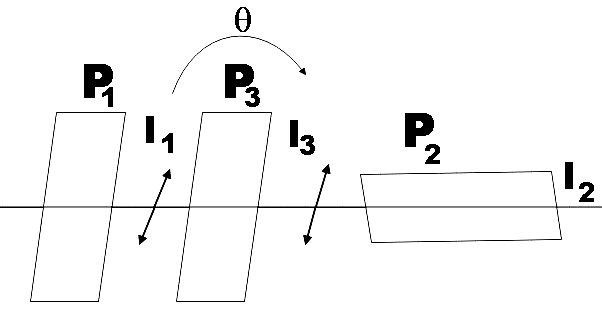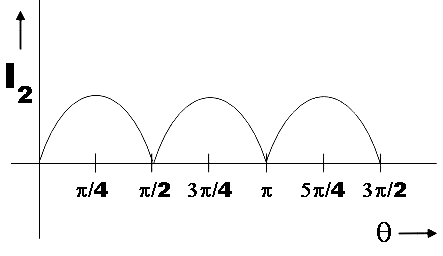Question
Question: (a) Good quality sun-glasses made of polaroids are preferred over ordinary colored glasses. Justify ...
(a) Good quality sun-glasses made of polaroids are preferred over ordinary colored glasses. Justify your answer.
(b) Two polaroids P1 and P2 are placed in crossed positions. A third Polaroid P3 is kept between P1 and P2 such that pass axis of P3 is parallel to that of P1. How would the intensity of light (I2) transmitted through P2 vary as P3 is rotated? Draw a plot of intensity ′I2′ Vs the angle ′θ′, between pass axes of P1 and P3.
Solution
As a first step, you should represent the given condition in a diagram. Now you should make use of Malu’s law to find the intensity of the beam transmitted through the third Polaroid introduced between the other two. Now you should accordingly find the intensity of the beam transmitted through P2 and then make a plot of the variation of the intensity with θ.
Formula used:
Malu’s law,
I=I0cos2θ
Complete step-by-step solution
(a) In the question, we are asked to justify why good quality sun-glasses made of polaroids are preferred over ordinary colored glasses.
Polaroid glasses have this advantage over colored glasses in that they have the capability to cut off harmful UV rays of the sun thus providing our eyes better protection. The intensity of light transmitted by Polaroid glasses is also low and also is more effective in reducing the glare due to reflections from horizontal surfaces. Hence, the given statement is justified.
(b) Here, two polaroids are kept in cross position with each other. A third polaroid is introduced in between them and is kept parallel to the first Polaroid. We are asked to find the variation of intensity of light transmitted by P2 when P3 is rotated by angle θ and also to plot the variation.

Clearly, the pass axis of P1 and P2 are at 2π angle with each other. Let θ be the angle at which P3 is being rotated. So the angle between the pass axis of P2 and P3 will be (2π−θ).
If the intensity of light coming through P1 isI1, then, by malu’s law the intensity of the light passing through P3 will be given by,
I3=I1cos2θ ……………………………. (1)
The intensity of light transmitted through P3 would be,
I2=I3cos2(2π−θ)
⇒I2=I3sin2θ
Substituting (1),
I2=(I1cos2θ)sin2θ
∴I2=I14(sin2θ)2
Thus we found the expression for the variation of the intensity of light(I2) transmitted through P2 with the angle at which P3 is rotated as,
I2=I14(sin2θ)2
Now let us make the plot of this variation,

Note: Malu’s law states that the intensity of the plane-polarized light, when passed through a rotatable polarizer, varies as the square of the cosine of the angle at which the polarizer is rotated. We have made the plot by substituting various values for θ in the above expression and thus finding the variation for I2 with it. As the relation is a function of the square of sine the intensity is found to be positive in the plot.
